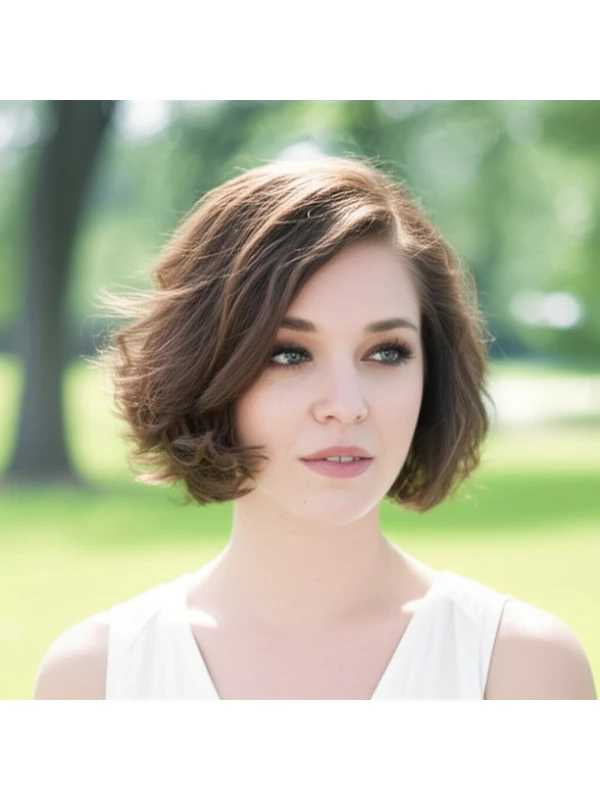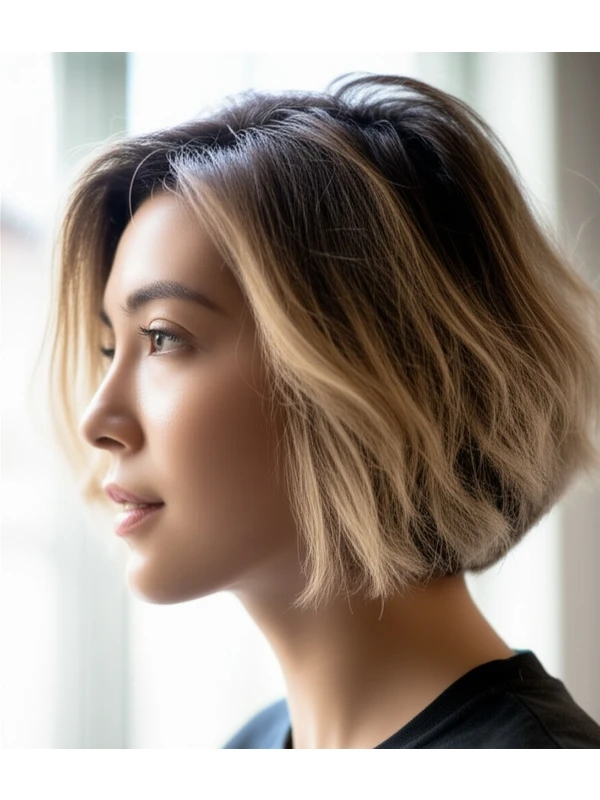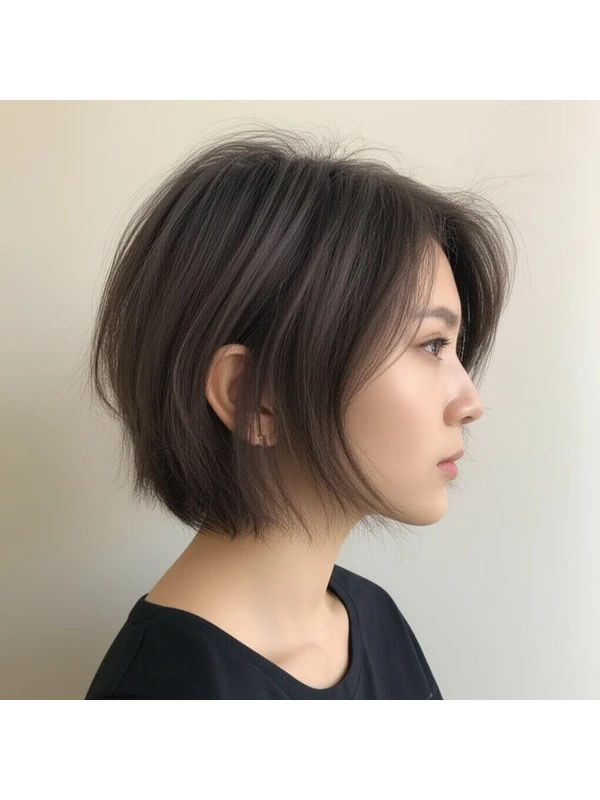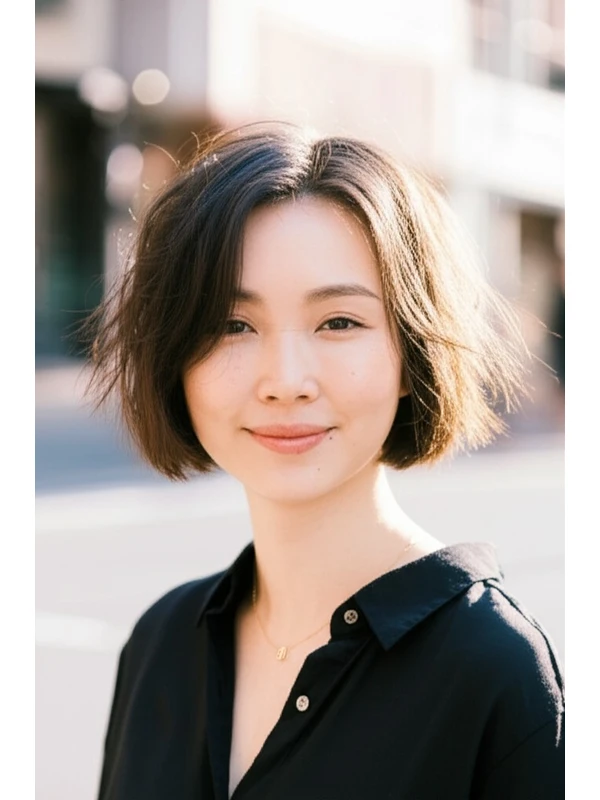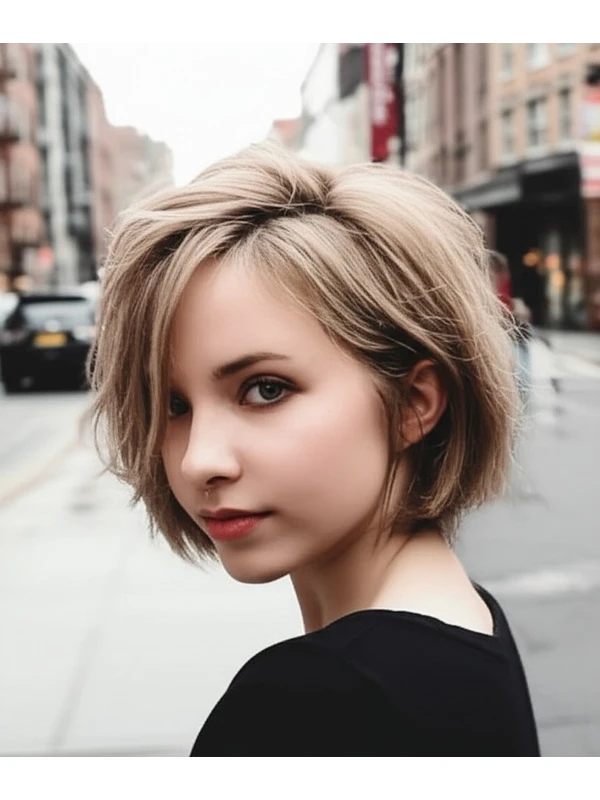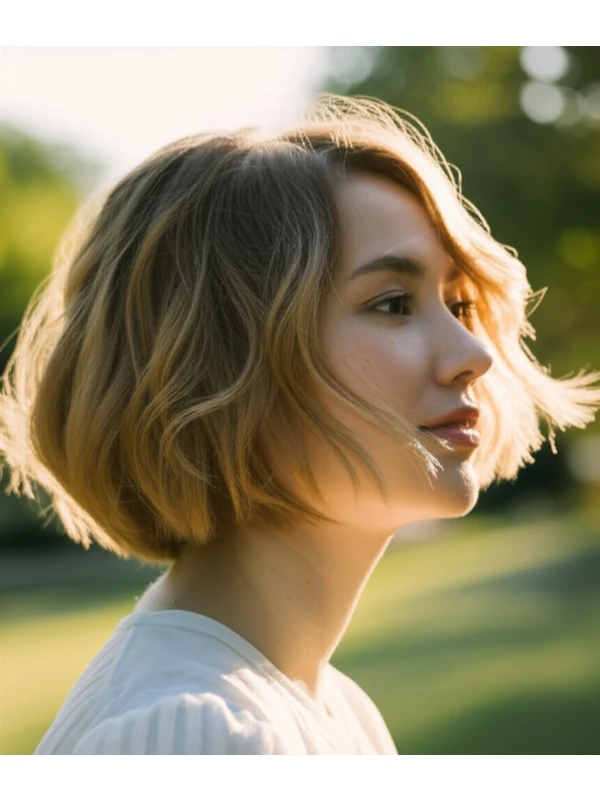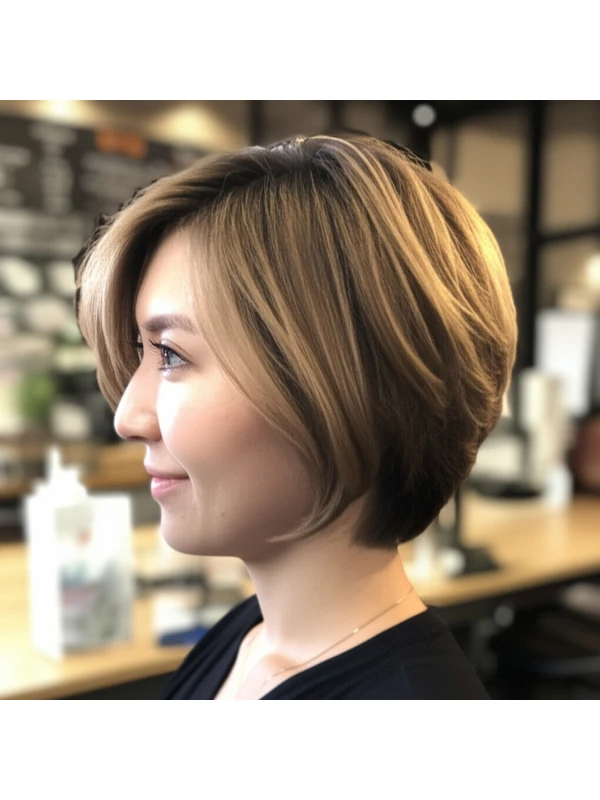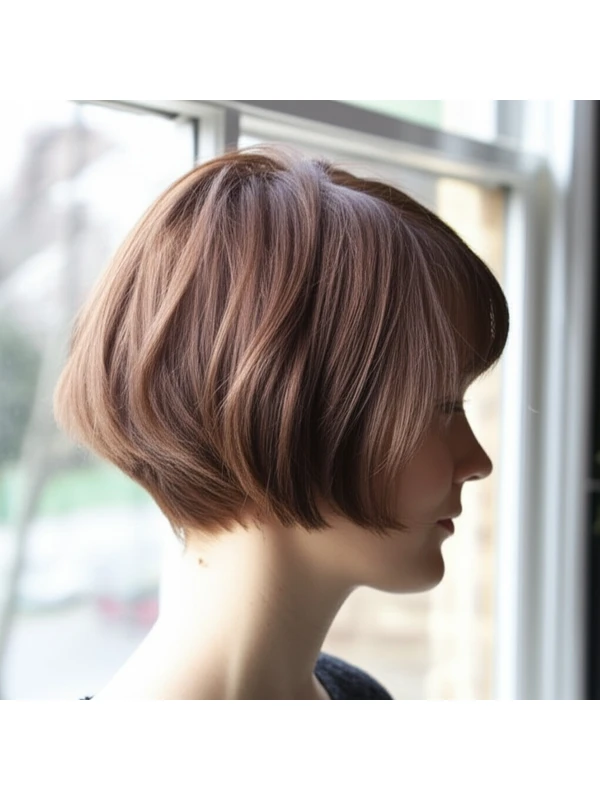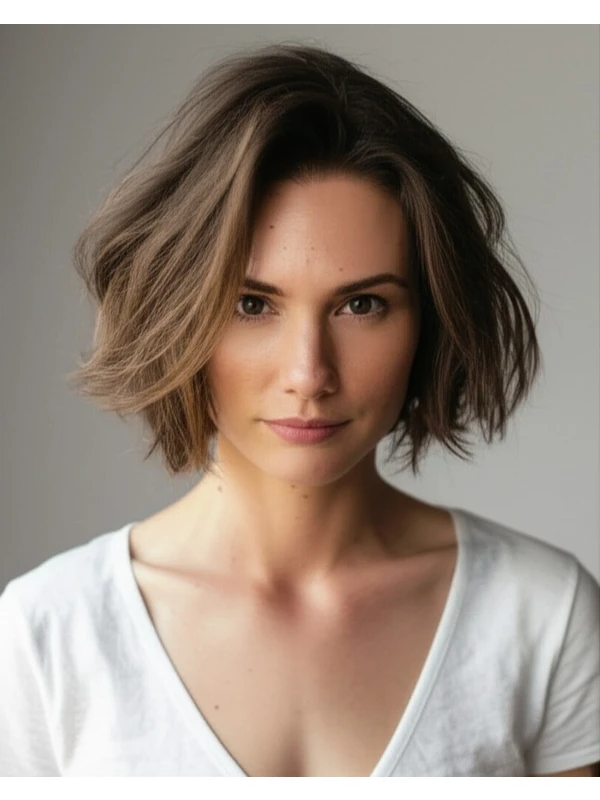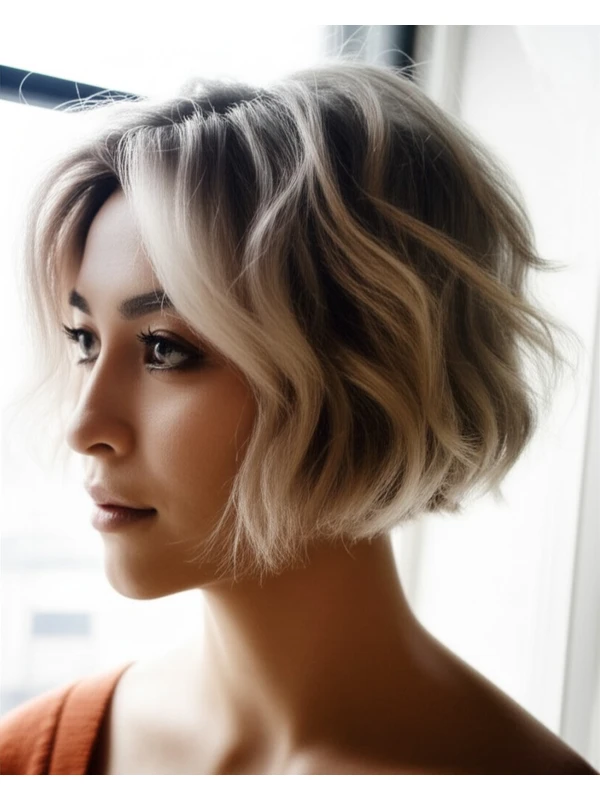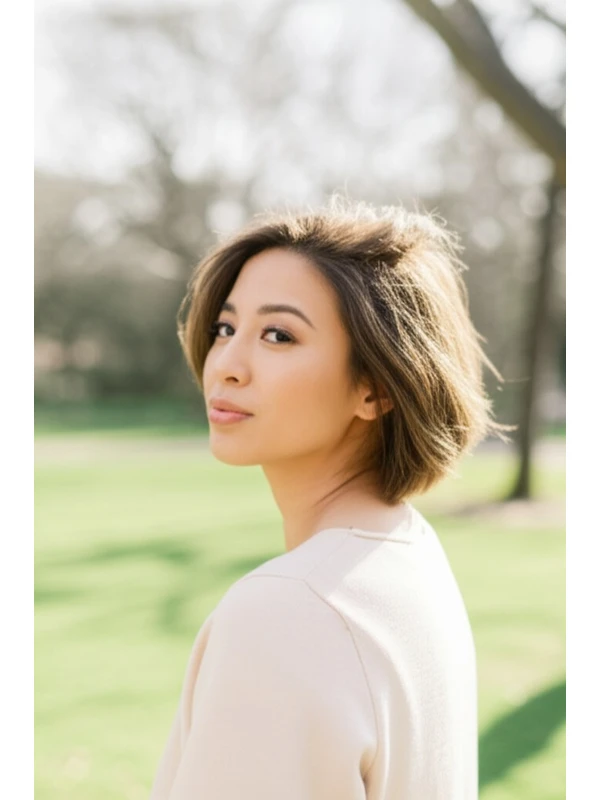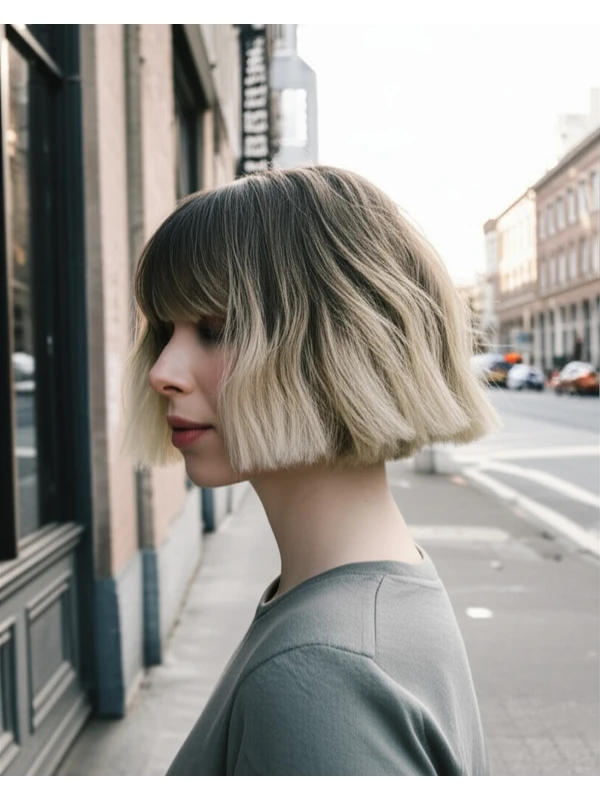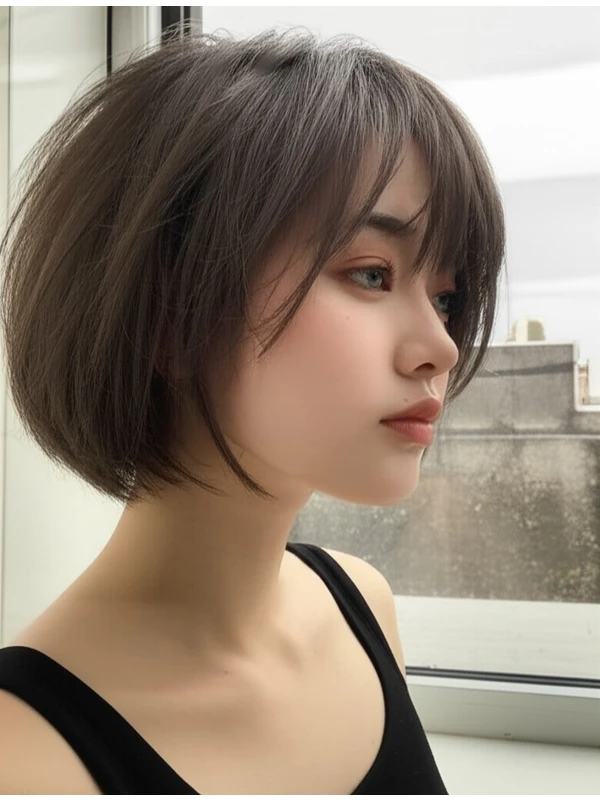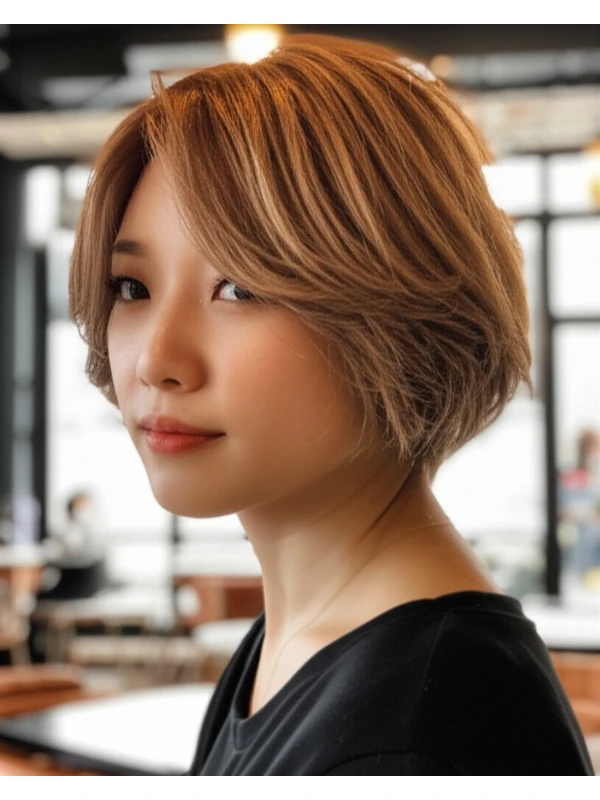#The A-Line Bob: Your Guide to a Modern Classic
The A-line bob is having a moment – and for good reason! It's chic, versatile, and flattering on many face shapes and hair types. But what exactly is an A-line bob? This guide breaks down everything you need to know, from finding the perfect length to keeping it looking its best.
#1) Background & Definition: What is an A-Line Bob?
Think of a classic letter "A." That’s essentially the shape we're aiming for! An A-line bob is a haircut where the shortest part sits at the nape of your neck and gradually gets longer towards the front. This creates a subtle, angled line that frames the face beautifully.
Key Features:
- Angled Shape: The defining characteristic - shorter in back, longer in front.
- Clean Lines: Often sleek and polished, but can also be textured for a more relaxed vibe.
- Versatility: Easily adapted to suit different face shapes, hair textures, and personal styles.
Typical Length Ranges: Generally falls between chin-length and shoulder-length (around 5 - 10 inches). The shorter the bob, the more dramatic the angle will be.
Alternative Names: You might also hear it called a blunt A-line bob, angled bob, or even a reverse bob (though that term can sometimes refer to other styles).
#2) Face Shape Fit: Finding Your Flattering Angle
The beauty of an A-line bob is its adaptability. However, certain lengths and fringe options will work better with specific face shapes.
- Oval: Lucky you! An oval face suits almost any length of the A-line bob. Experiment with different angles and fringes to find your perfect look. A side-swept fringe softens the features even more.
- Round: Opt for a longer A-line bob (closer to shoulder-length) to elongate the face. Avoid chin-length bobs, as they can emphasize roundness. A deep side part creates asymmetry and visual length. No blunt bangs – go for wispy or angled fringe instead.
- Square: Soften strong jawlines with a slightly softer angle in your bob. A layered A-line bob (with subtle texture) helps break up the angularity. Side-swept bangs are very flattering, as they diffuse the squareness of the face.
- Heart: An A-line bob that’s longer on the sides will balance a wider forehead and pointed chin. Chin-length works well too! Consider a wispy fringe to soften the upper portion of your face.
- Diamond: An A-line bob with layers around the cheekbones can help add width where it's needed. Side parts are great for creating asymmetry, which softens diamond shapes. Avoid blunt bangs that might accentuate angles.
- Oblong (Long): Similar to a round face, you want to avoid emphasizing length. Choose a shorter A-line bob with volume at the sides and consider adding layers or texture to create width. A fringe can also help shorten the appearance of your face.
#3) Body Proportions & Height Guidance: Silhouette Harmony
Beyond face shape, your overall body proportions play a role in how an A-line bob looks.
- Petite: Shorter, chin-length or slightly above, A-lines are generally most flattering as they don't overwhelm the frame.
- Average: Most lengths work well! Experiment to find what you love best.
- Tall: Longer A-line bobs (shoulder length and beyond) can balance your height beautifully.
- Narrow Shoulders: A bob with volume at the sides creates a more balanced silhouette. Consider layers or subtle teasing at the crown.
- Broad Shoulders: Opt for a sleeker, less voluminous A-line to avoid adding extra width to your shoulders.
- Short Neck: Choose an A-line that isn't too long in the front; stopping around the chin is often best. Avoid excessive volume at the back of the head.
- Long Neck: A longer bob or a more angled cut can help visually shorten the neck length.
#4) Works Best With Hair Types & Densities: Texture Considerations
The A-line bob's adaptability shines here, but understanding your hair type is key to achieving the desired result.
- Straight Hair: The A-line shape looks incredibly sleek and polished on straight hair. It’s easy to style and maintain.
- Wavy Hair: Embrace those waves! An A-line bob with layers will enhance natural movement and texture. Be mindful of shrinkage – account for it when choosing the length (see below).
- Curly/Coily Hair: This cut can be stunning, but requires careful consideration of curl pattern and density. Shorter lengths are often more manageable.
- Fine Hair: Layers add volume to fine hair, making an A-line bob look fuller. Avoid overly blunt cuts, which can make the hair appear even thinner.
- Medium/Thick Hair: An A-line bob works well with medium and thick hair – just be sure your stylist thins out any excess bulk for a more manageable style.
- Density Tips: For thicker densities, ask your stylist to remove weight throughout the cut. For finer densities, consider texturizing techniques or strategic layering to create volume.
- Shrinkage (Curls/Coils): Natural curls and coils can shrink significantly when dry! Account for this by cutting longer than you think you need. A good rule of thumb is to add 2-4 inches depending on your curl pattern.
#5) Styling Variations: From Sleek to Textured
The beauty lies in the versatility!
- Sleek vs. Textured: A sleek bob uses a smoothing serum and flat iron for a polished look. A textured bob incorporates layers, point cutting, or air drying techniques for a more undone feel.
- Middle vs. Side Part: A middle part creates symmetry; a side part adds softness and volume.
- Fringe Variations: Blunt bangs, wispy bangs, angled bangs – the possibilities are endless! Consider your face shape when choosing a fringe style.
- Occasion Styling:
- Casual: Air-dry with a texturizing spray for effortless waves.
- Office: Sleek and polished with a flat iron and shine serum.
- Evening: Add volume at the roots, curl the ends under, or use hair accessories for extra glamour.
#6) Maintenance: Keeping Your Shape Sharp
- Trim Cadence: Every 6-8 weeks to maintain the A-line shape and prevent split ends.
- At-Home Routine: Gentle shampooing (2-3 times a week), moisturizing conditioner, and regular deep conditioning treatments are essential.
- Heat vs. Air Dry: Minimize heat styling whenever possible. When using heat tools, always use a heat protectant spray!
- Product Checklist:
- Shampoo & Conditioner: For your hair type (color-safe if colored)
- Leave-in Conditioner: To hydrate and detangle.
- Styler: Mousse, gel, or cream to define shape and texture.
- Finishing Spray: To lock in style and add shine.
- Estimated Daily Styling Time: 15-30 minutes (can be shorter with air drying).
#7) Grow-Out Roadmap: Evolving Your Look
- Months 1-3: The A-line shape is most noticeable. Regular trims are crucial to maintain the angle.
- Months 4-6: The bob starts to transition into a lob (long bob). Consider adding layers or texture if you want more movement. You can also experiment with different styling techniques.
#8) Color Pairings: Enhancing Your A-Line Bob
- Cool Undertones: Ashy blondes, cool browns, and even deep jewel tones like emerald green look stunning.
- Warm Undertones: Honey blondes, caramel highlights, copper reds – embrace those warm hues!
- Low-Commitment Options: Balayage or babylights add dimension without a harsh root line.
#9) Season & Occasion Guide: Styling for Every Moment
- Spring/Summer: Lighter color palettes and beachy waves are perfect for warmer weather.
- Fall/Winter: Richer, deeper colors and sleek styles exude sophistication.
- Work: A polished, professional look with minimal fuss.
- Weddings: Elegant updo or a soft, romantic wave pattern.
- Parties: Playful styling options like curls, braids, or statement accessories.
#10) Cost & Time: Salon Investment
- Salon Time: Typically 45-90 minutes for the initial cut.
- Price Range: Expect to pay a moderate to high price range (relative terms – varies by location and stylist experience). Subsequent trims will be quicker and less expensive.
#11) Pros & Cons: Weighing Your Options
Pros: Flattering on many face shapes, versatile styling options, modern and chic look. Cons: Requires regular trims to maintain shape, can be time-consuming to style (depending on desired look), may not suit all hair textures without adjustments.
#12) Salon Consultation Script: Your Checklist for Success
Here are some questions/points to discuss with your stylist:
- "I'm interested in an A-line bob. Can you assess my face shape and recommend a flattering length?"
- “What angle would best suit my face shape?”
- "How can we incorporate layers or texture to enhance my hair’s natural movement?"
- "Can we discuss styling options for both casual and more formal occasions?"
- "I have [hair type/density]. What adjustments should be made to the cut to account for this?"
Disclaimer: This article provides general hairstyle advice. It is not a substitute for professional hair consultation. Always consult with a qualified hairstylist before making any significant changes to your hair.
